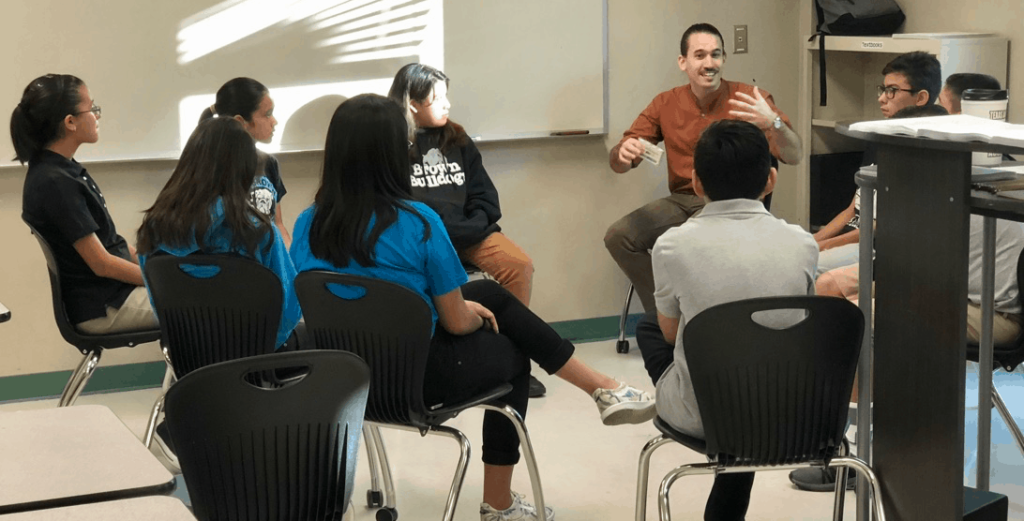Why Every K-12 District Should Invest in Social and Emotional Learning

By: Juan Cabrera and Ray Lozano
For far too long, reading, writing and arithmetic were widely touted as the foundational academic subjects for young learners. To understand just how woefully inadequate this assumption was, we need only look to the recent events of 2020.
A quick scan of U.S. news headlines reveals what our students and communities have been grappling with: crises, uncertainty, personal loss, unemployment, racism, oppression, unrest, and trauma. How do our schools and more specifically, educators and educational leaders address these far-reaching and deeply disturbing issues?
Across the 86 campuses of El Paso Independent School District (EPISD), an emphasis on social and emotional learning (SEL) has been a defining factor in our continued success. And despite its absence from state accountability systems, SEL is picking up traction in K-12 education—with good reason.
What was initially viewed by some as a ‘nice-to-have’ element in our curricula has been a core competency all along. In centering our early work on SEL, EPISD was able to provide a foundation for students that has carried them—and our educator teams—through a period of challenging circumstances none of us will soon forget.
How Social and Emotional Learning Transforms Communities
Our work at EPISD started on shaky ground in a community wounded by crisis. We needed to build community trust in a new leadership team, and an emphasis on SEL wasn’t just the most practical approach—it held promise for empowering our students and families over the long-term. SEL is grounded in the understanding that the best learning emerges in the context of supportive relationships.
The process we follow focuses on building students’ knowledge, skills, and attitude to navigate the world by explicitly teaching skills like life management and social awareness. It’s part of a five-step method EPISD students learn from an early age: self-management, social awareness, responsible decision making, self-awareness, and relationship skills.
The process we follow focuses on building students’ knowledge, skills, and attitude to navigate the world by explicitly teaching skills like life management and social awareness.
It’s part of a five-step method EPISD students learn from an early age: self-management, social awareness, responsible decision making, self-awareness, and relationship skills.
These skills and aptitudes can change the trajectory of a life. We also recognized that it could have an exponential impact on El Paso at large.
Social and Emotional Learning at Scale
This wasn’t an effort the EPISD team could tackle alone. We learned from CASEL (Collaborative for Academic, Social, and Emotional Learning) and worked with a network of school districts in the Council of the Great City Schools that recognize the importance of SEL.
Over the past few years, we shared SEL resources with our schools including integrating SEL into reading, math and other core instruction; teaching explicit SEL skills such as listening; and engaging deeply with family and community partners to embed SEL throughout students’ out-of-school time as well. Students experience morning meetings and community circles, which focus on relationship development and classroom culture as well as academics.
We set up an Office of Student and Family Empowerment, which prioritizes explicit SEL instruction and mindfulness strategies, and supports campuses in their efforts to cultivate adult and student social and emotional competence.
By all measures, it’s been a success: attendance has improved, and discipline measures and student transience have decreased. But the measures that matter most are the hardest to quantify.
Staying Connected in Crises
Nothing in recent memory has tested our education system like the global pandemic. Districts around the country scrambled to switch to a remote learning environment to ensure the safety of students, staff and families.
Once apart, we encountered further painful events. The ongoing issues of systemic racism and police brutality were brought to the forefront by the horrific murder of George Floyd and others who tragically lost their lives at the hands of those whom we should be able to trust. Like every community across the country, EPISD has confronted concurrent waves of anxiety, stress, separation, anger, and fear.
Through it all, the social and emotional grounding El Paso learners receive has proved vital to our ability to connect with and support our staff and students. Teachers continue to structure virtual lessons, community circles, and classroom meetings that tackle incredibly difficult issues in an age-appropriate manner, elevating students’ perspectives and reinforcing a sense of connection and belonging.
We’re in a time when administrators and principals must lead with empathy, helping teachers and other staff members take care of themselves—in some cases, scheduling virtual learning sessions on self-care. Teachers have also served as logistical guides, helping students to navigate unfamiliar technology and keep up with lessons, while connecting families to food assistance programs and other supports.
As a result, 95 percent of our 54,535 students participated in online learning instruction this spring. Physical distance aside—as a school community, we have indeed grown closer.
Preparation for What’s Next
Knowing that there’s still much we cannot foresee, as our team looks ahead to the fall our focus will be on creating learning environments that are predictable, flexible and empowering.
Promoting critical social and emotional competencies and elevating the voices of our students will remain a priority, but we realize there’s work to do to further expand our healing-centered and trauma-informed practices in a way that serves students and adults in our school community. Over the long-term, our Student Care Teams will identify additional barriers to academic engagement and wellbeing.
Because of our investment in SEL, students, families, and staff know our schools offer a safe physical as well as virtual space where they’re seen, valued and heard. In a time of crisis or routine, our social and emotional competencies and strong relationships will hold us together.
With many more uncertainties and challenges ahead this coming school year, our hope is that school districts across the nation will join us in embracing social and emotional learning—not only in response to current events, but as a foundation for far deeper connections and more meaningful learning.
For more, see:
- Summer Learning: 10 Professional Learning Experiences for Educators
- Brian Greenberg on Creating Great New Schools
- Mastery Learning in Action
Juan Cabrera is Superintendent of the El Paso Independent School District. For more from Juan, read www.edutransformed.com and follow on Twitter at @JECabrera12 and @EDUtransformed1.
Ray Lozano is the Executive Director, Student and Family Empowerment in El Paso ISD. He is dedicated to supporting educators in aligning SEL and academics to improve outcomes for all. You can fid him on Twitter at @rslozano003.
Stay in-the-know with innovations in learning by signing up for the weekly Smart Update. This post includes mentions of a Getting Smart partner. For a full list of partners, affiliate organizations and all other disclosures, please see our Partner page.





0 Comments
Leave a Comment
Your email address will not be published. All fields are required.